Table of Contents
Introduction
When you think of South India, places like Ooty, Munnar, and Hampi probably come to mind — but what if we told you that some of the most magical destinations lie off the tourist radar? From mysterious rock formations and misty mountain villages to forgotten forts and serene valleys, Places to Visit in South India is filled with hidden gems that offer beauty, peace, and a touch of adventure.
These offbeat destinations aren’t just about skipping the crowds — they’re about experiencing nature, culture, and history in its purest form. Whether you’re a nature lover, solo traveler, or weekend explorer, these hidden tourist places in South India will absolutely blow your mind and leave you wanting more.
1.Araku Valley – Andhra Pradesh
Tucked away in the Eastern Ghats, Araku Valley is a lush, serene retreat about 120 km from Visakhapatnam — yet it feels like a world apart. Surrounded by rolling coffee plantations, misty hills, and tribal villages, this hidden gem is a visual and cultural delight.
The train ride to Araku is one of India’s most scenic, winding through more than 50 tunnels and over countless bridges, offering breathtaking views of waterfalls, dense forests, and emerald valleys. Once there, you can explore the Tribal Museum, Borra Caves, and coffee farms where the aroma alone is worth the trip. Ideal for nature lovers, photographers, and slow travelers, Araku offers peace without pretension — a true offbeat escape in the heart of Andhra.
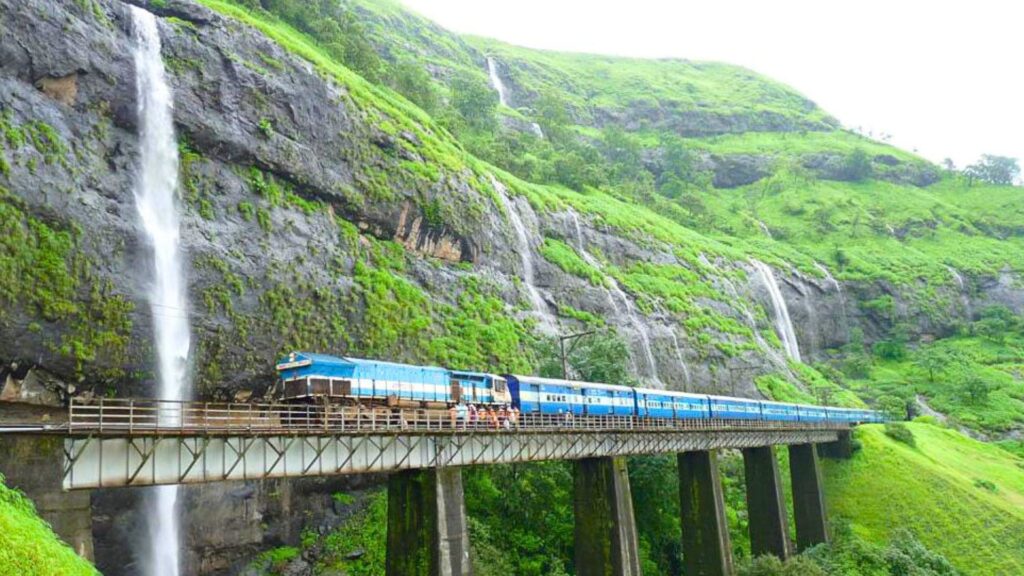
Top Attractions In & Around Araku Valley
- Borra Caves (35 km) – A million-year-old limestone wonder with glowing formations and hidden legends tied to Lord Shiva.
- Chaparai Waterfalls (13 km) – A stream flowing over smooth rock beds; ideal for picnics and photos.
- Coffee Museum – A quaint space that narrates the bean-to-brew story of Araku’s tribal coffee heritage.
- Padmapuram Gardens – A 26-acre botanical park with rare plant species and quirky treehouse stays.
- Katiki Waterfalls – Accessible via a scenic trek from Borra, this lesser-known cascade is worth the effort.
- Ananthagiri Hills – A peaceful hill station en route to Araku, perfect for sunrise viewpoints and light hiking.
Experience the valley like a local with cozy homestays and plantation-view lodges, offering warm hospitality and serene vibes.Savor tribal dishes like Bamboo Chicken and Ragi Sangati, and don’t miss a cup of freshly brewed Araku coffee.
2. Gokarna – Karnataka
Tucked away on the Karnataka coast, Gokarna is where spiritual calm meets coastal charm. Known for its uncrowded beaches, ancient temples, and laid-back vibe, Gokarna is often seen as the peaceful cousin of Goa — perfect for travelers who crave both serenity and soul.
Gokarna was — and still is — one of the most important Shaivite pilgrimage sites in Places to Visit in South India . Its name translates to “cow’s ear,” believed to mark the spot where Lord Shiva emerged from the ear of a cow, according to ancient legend.This 4th-century temple is The Mahabaleshwar Temple, spiritual nucleus. It enshrines the Atma Linga, a powerful relic associated with Lord Shiva that, as per mythology, grants liberation (moksha) to devotees. Unlike most temples, non-Hindus are not allowed inside the sanctum, but the temple’s exterior and the devotional energy it radiates are worth experiencing for everyone.
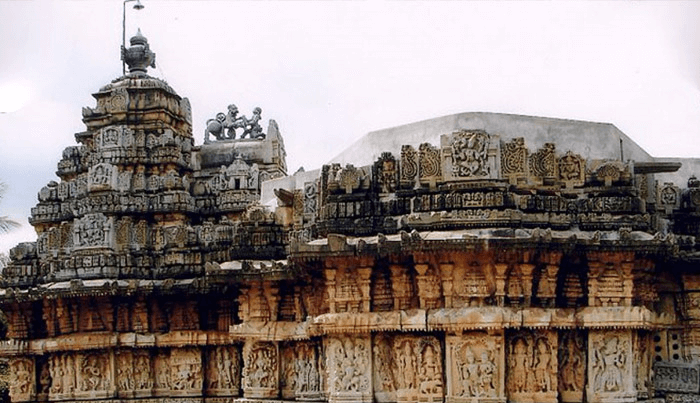
Top Beaches in Gokarna
- Om Beach – Shaped like the sacred Om symbol, it’s great for yoga, sunsets, and light water sports.
- Kudle Beach – A favorite among backpackers, with beach huts, cafés, and stunning views.
- Half Moon Beach – Accessible only by boat or trek; perfect for solitude and stargazing.
- Paradise Beach – Remote, quiet, and ideal for offbeat explorers.
- Gokarna Main Beach – Bustling with pilgrims, this is the spiritual heart of the coastline.
- Mirjan Fort (11 km) – A 16th-century fort wrapped in greenery — quiet, scenic, and perfect for history lovers and photo ops.
- Vibhooti Falls (35 km) – A hidden forest waterfall ideal for a light trek and a refreshing dip — best visited post-monsoon.
Gokarna offers a unique beach trekking experience, linking Kudle, Om, Half Moon, and Paradise beaches via scenic coastal trails.After the trek, relax at a laid-back café with seafood and sea views. It’s also a rising wellness hub, known for yoga retreats and Ayurvedic healing. Nights are peaceful — think starlit skies and the sound of waves.
3. Meghamalai – Tamil Nadu
Hidden deep in the Western Ghats, Meghamalai, also known as the High Wavy Mountains, is one of Tamil Nadu’s most tranquil and untouched hill stations. Draped in mist, carpeted with tea estates, and home to elephants and exotic birds, it’s a serene escape far removed from commercial tourism.Wander through lush tea estates, sip on fresh local brews, and take in sweeping views of the untouched landscape. Its proximity to the Meghamalai Wildlife Sanctuary offers a chance to spot elephants, gaurs, spotted deer, and rare birds like the Malabar whistling thrush. With limited tourist infrastructure, Meghamalai remains blissfully quiet — a perfect escape for those seeking solitude and serenity.

- Manalar Dam & Irappu Dam – Beautiful picnic spots with stunning reflections and forest backdrops.
- Vellimalai Viewpoint – The highest peak offering panoramic views of the Western Ghats.
- Venniyar Estate – A photogenic spot for long walks amidst tea gardens and mist.
- Meghamalai Falls – A hidden seasonal waterfall cascading through the greenery.
4.Gandikota – Andhra Pradesh
Carved by the Pennar River, Gandikota is one of India’s most jaw-dropping hidden gems — often dubbed the “Grand Canyon of India” for its stunning red sandstone cliffs and dramatic gorge views. Located in the Kadapa district of Andhra Pradesh, this offbeat destination blends natural wonder, medieval history, and total tranquility.
At the heart of Gandikota lies the 13th-century Gandikota Fort, once a stronghold of the Pemmasani Nayakas under the Vijayanagara Empire. Surrounded by massive stone walls and rocky terrain, the fort houses:
- The Ranganatha Swamy Temple and Jama Masjid — reflecting rich architectural contrast.
- Granaries, watchtowers, and ancient structures that offer panoramic views of the gorge.
- A stone-paved path that leads to the edge of the cliff — perfect for golden hour photography.

Why Visit Gandikota ?
- Breathtaking Landscape: The canyon-like gorge formed by the Pennar River is nothing short of surreal, especially at sunrise or sunset.
- Adventure Vibes: Ideal for trekking, rock climbing, and camping under the stars.
- Historical Richness: The fort’s ruins are scattered across the landscape, giving it a wild yet regal charm.
- Zero Crowds: Gandikota remains blissfully off the radar — expect peace, silence, and untouched nature.
- Belum Caves (60 km) – India’s second-largest cave system, filled with stalactites, underground pathways, and natural formations.
- Owk Reservoir – A tranquil spot for boating and birdwatching.
5.Halebidu – Karnataka
Halebidu’s temples are an open-air gallery of stone art. The most iconic among them, the Hoysaleswara Temple, is carved out of black soapstone and dedicated to Lord Shiva. Every inch of its exterior is adorned with detailed friezes and mythological scenes — from gods and goddesses to celestial nymphs, animals, dancers, and epic stories from the Ramayana, Mahabharata, and Bhagavad Gita.
Despite its grandeur, Halebidu was ransacked twice by invaders in the 14th century, leading to its eventual decline. But its temples remain standing — weathered yet magnificent, often considered among the finest examples of Hoysala architecture.
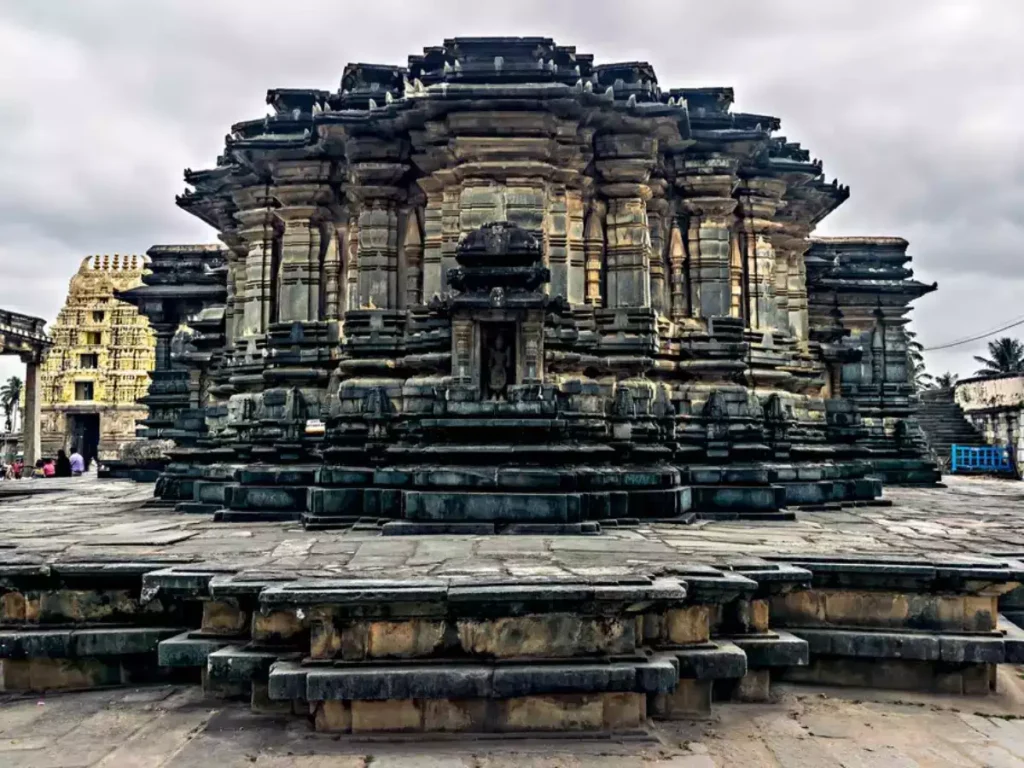
Must-Visit Temples & Attractions:
- Hoysaleswara Temple – Twin temples for Lord Shiva and Parvati, famed for their intricate stone carvings.
- Kedareshwara Temple – A lesser-known but equally beautiful temple dedicated to Shiva, with serene surroundings.
- Archaeological Museum – Located nearby, it houses sculptures, inscriptions, and relics from Halebidu and neighboring ruins.
- Basadi Halli (Jain Basadis) – Elegant Jain temples built in polished stone with peaceful courtyards.
6.Papi Hills – Godavari’s Andhra Pradesh
Tucked deep within the Eastern Ghats, Papi Hills (Papi Kondalu) is a stunning river gorge carved by the Godavari River, often described as Andhra Pradesh’s best-kept secret. With its emerald-green hills, shimmering waters, and tribal heartland energy, Papi Hills offers a surreal, offbeat escape far from the noise of typical tourist circuits.The name “Papi Kondalu” translates to “sinful hills”, based on a mythological belief that the hills can absolve sins. But one look at this enchanting landscape, and you’ll only find peace and purity.

Experiences at Papi Hills
- Scenic River Cruises: The highlight of a visit here is a Godavari boat ride, especially from Rajahmundry or Polavaram to Perantapalli. As the boat glides through the narrow, mist-covered gorge, you’ll feel like you’re entering another world.
- Boat Cruise from Rajahmundry or Bhadrachalam – Choose from 1-day and 2-day cruises with onboard meals and cultural stops.
- Trekking and Nature Trails – Light trekking around the forested regions near Kolluru and Pochavaram.
- Overnight River Camping – Some packages include tented stays on river islands for an unforgettable under-the-stars experience.
- Nature at Its Rawest: Lush forests, river islands, and the backdrop of towering hills make it a paradise for nature lovers and photographers.
- Tribal Culture: The region is home to indigenous communities like the Koya and Lambada, offering a glimpse into Andhra’s tribal heritage through art, traditions, and simple living.
- Spiritual Serenity: Visit the Perantapalli Ashram and the peaceful Ramakrishna Muni Vatika, nestled along the banks, where spiritual seekers come to meditate.
7.Gavi – Kerala
Hidden within the dense greenery of the Periyar Tiger Reserve, Gavi is one of Kerala’s most secluded and eco-conscious travel destinations. Unlike Places to Visit in South India popular tourist hubs, Gavi focuses on conservation-based tourism, offering travelers a chance to immerse themselves in the untouched wilderness of the Western Ghats — a UNESCO World Heritage Site.
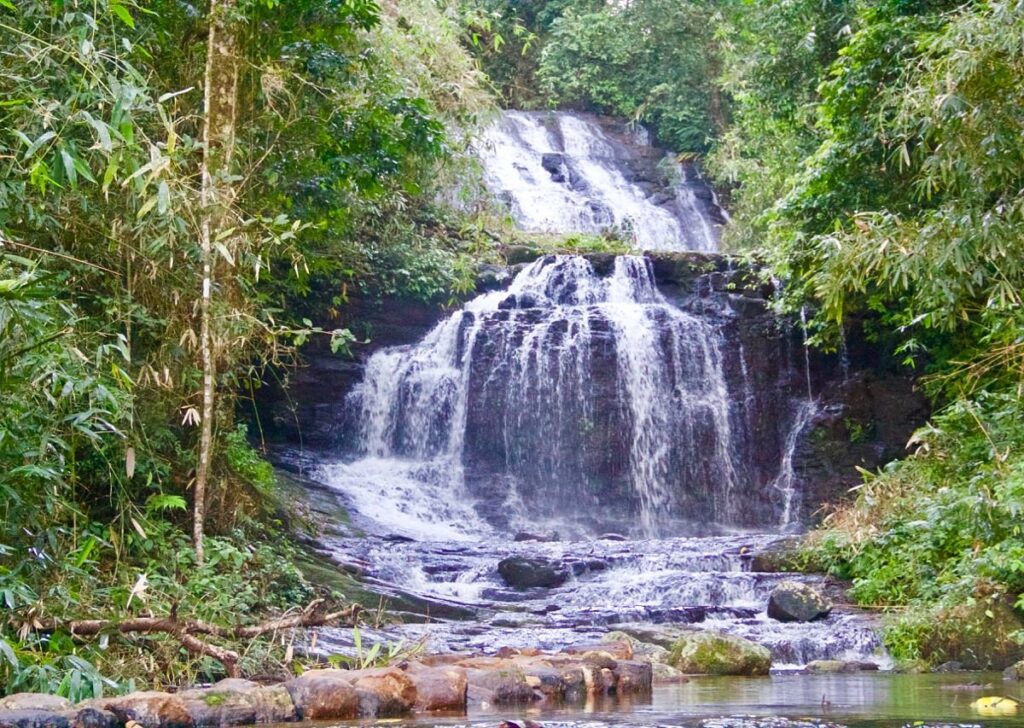
Top Experiences in Gavi
- Nature Walks & Jungle Treks: Accompanied by local forest guides, explore the jungle trails at sunrise or sunset.
- Jeep Safaris: Travel through dense forest routes with a chance to spot wildlife in their natural habitat.
- Boating on Gavi Lake: Surrounded by thick forest, the calm waters offer a chance to witness herds of elephants coming to drink.
- Camping in the Wild: Stay in forest tents or eco-lodges under starlit skies — a surreal, back-to-nature experience.
- Visit to Sabarimala Viewpoint: On clear days, you can catch a glimpse of the sacred pilgrimage site from Gavi’s hilltops.
8.Yana Rocks – Karnataka
Tucked away in the lush forests of Uttara Kannada, Yana is one of Karnataka’s most surreal natural wonders. At the heart of this offbeat gem are two massive black limestone monoliths — Bhairaveshwara Shikhara and Mohini Shikhara — rising dramatically from the forest floor, shrouded in mist and mystery.
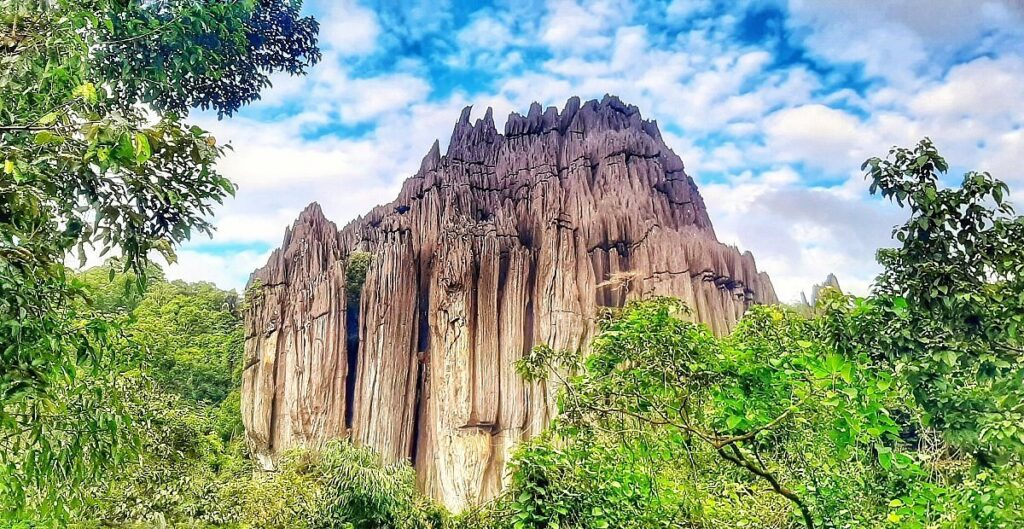
Top Things to Do at Yana
- Trek through the jungle trails to reach the monoliths – the easy-moderate hike is perfect for families and beginners.
- Explore the limestone caves, filled with naturally formed rock formations and spiritual aura.
- Visit Vibhuti Falls (approx. 9 km away) – a serene waterfall perfect for a quick dip and picnic after the hike.
- Photography – The contrast of dark rocks against green forest and blue skies makes Yana a visual delight.
- Otherworldly Landscape: These monoliths, standing at over 300 feet, appear like volcanic towers from another planet, surrounded by thick forest and birdsong.
- Spiritual Significance: The Bhairaveshwara cave temple beneath the main rock houses a naturally formed Shiva Linga and a trickling stream of water, considered sacred by locals.
- Eco-Friendly Experience: Yana is a plastic-free zone, and the 2 km forest trail leading to the rocks is filled with butterflies, chirping birds, and towering trees — making it a peaceful trek for nature lovers.
9.Thenmala – Kerala
Nestled in the foothills of the Western Ghats, Thenmala is India’s first officially designated eco-tourism destination — a model of how nature, recreation, and education can blend harmoniously. Located in Kollam district, this well-planned zone invites visitors to explore the wild without harming it, making it perfect for families, students, and first-time nature travelers.
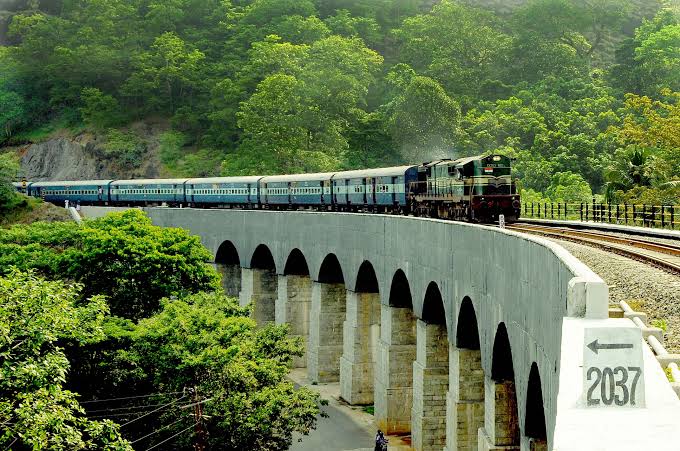
What Makes Thenmala Special
- Suspension Bridge: A scenic walkway over forested terrain and streams — perfect for light adventure and photo ops.
- Sculpture Garden: Artistic installations themed around nature, sustainability, and Kerala’s folklore.
- River Rafting & Boating: Gentle rafting along the Kallada River and pedal boating near the reservoir for water-loving explorers.
- Deer Rehabilitation Centre: Spot spotted deer, sambar, and other gentle wildlife in a protected setting.
- Nature Trails & Jungle Treks: Guided forest walks through tropical greenery, butterfly gardens, and medicinal plant zones.
10.Dhanushkodi – Tamil Nadu
Silent. Wind-swept. Forgotten. That’s the haunting beauty of Dhanushkodi, a once-thriving town at the southern tip of Rameswaram Island that now stands as a ghost town frozen in time. Bordered by the Bay of Bengal on one side and the Indian Ocean on the other, it’s where nature, myth, and tragedy converge to create one of Places to Visit in South India’s most surreal coastal destinations.
In 1964, a devastating cyclone struck Dhanushkodi, destroying everything in its path — homes, schools, temples, railway lines, and churches. Over 1,800 people were lost, and the town was declared unfit for habitation. What remains today are weathered ruins, broken walls, and sand-covered streets, slowly being reclaimed by the sea.
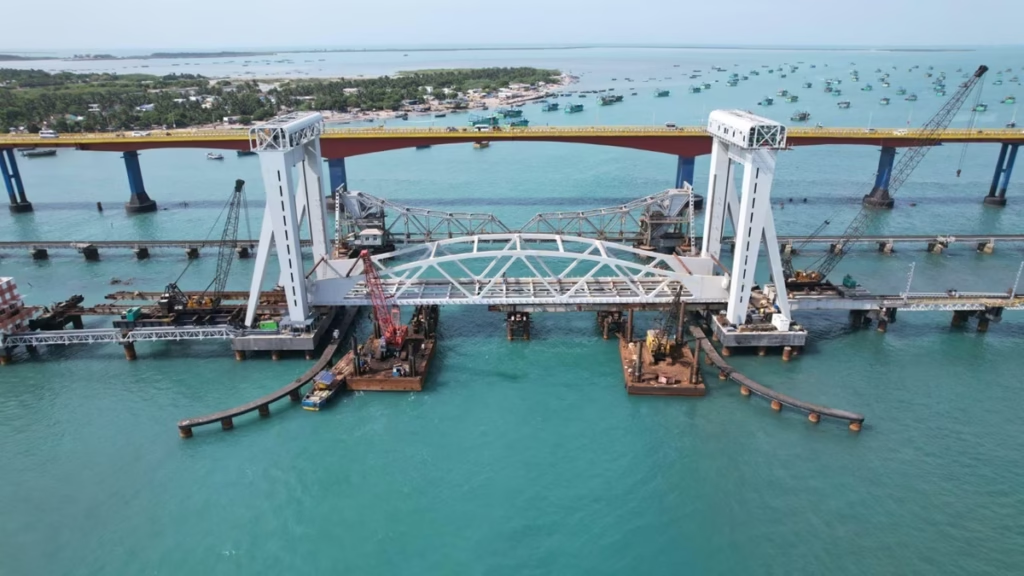
What to See in Dhanushkodi
- Ruins of the Old Church & Railway Station – Haunting and poetic, these weather-beaten structures stand as reminders of a lost era.
- Dhanushkodi Beach – Vast, surreal, and eerily calm, where the Bay of Bengal and the Indian Ocean meet.
- Ram Setu Viewpoint (Adam’s Bridge) – The mythical bridge believed to have been built by Lord Rama’s vanara army to reach Lanka.
- Kothandaramaswamy Temple – One of the few structures that survived the cyclone, with rich spiritual significance.
- Local Fisher Villages – A small community of fisherfolk still live near the coast, offering fresh seafood and insights into survival by the sea.
Conclusion
South India is more than just Ooty, Munnar, and Hampi. Tucked between its misty hills, dense forests, ancient ruins, and untouched coastlines are hidden gems waiting to be explored — each with its own story, silence, and soul.
Whether you’re a weekend wanderer, a nature lover, or a seeker of offbeat experiences, these lesser-known destinations offer raw beauty, cultural depth, and peaceful escapes far from the crowd. All you need is a backpack, curiosity, and the courage to take the road less traveled.So next time you plan a trip, go beyond the guidebooks — Places to Visit in South India secrets are calling.

